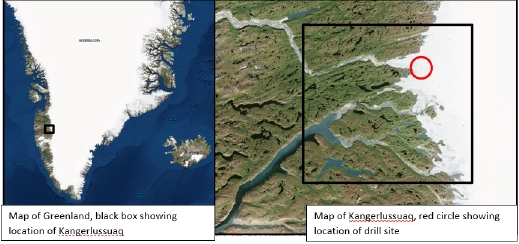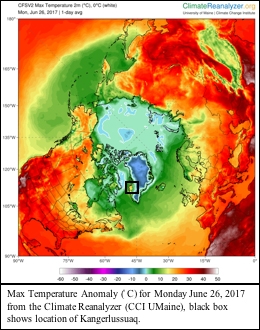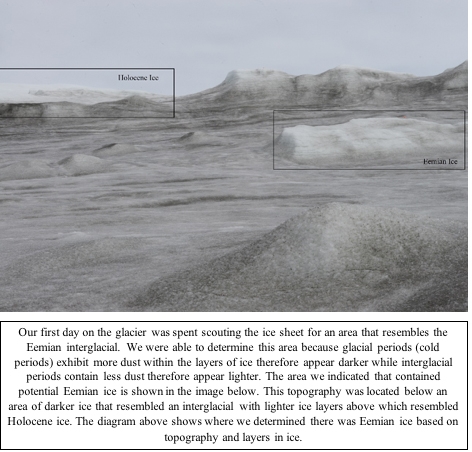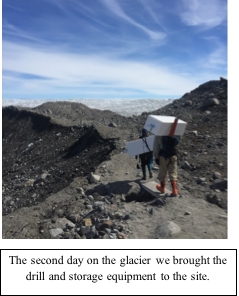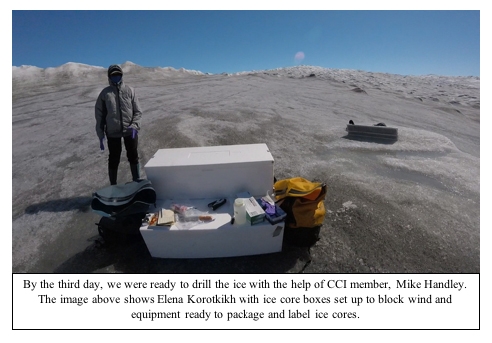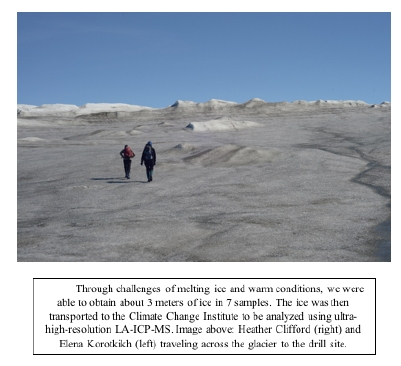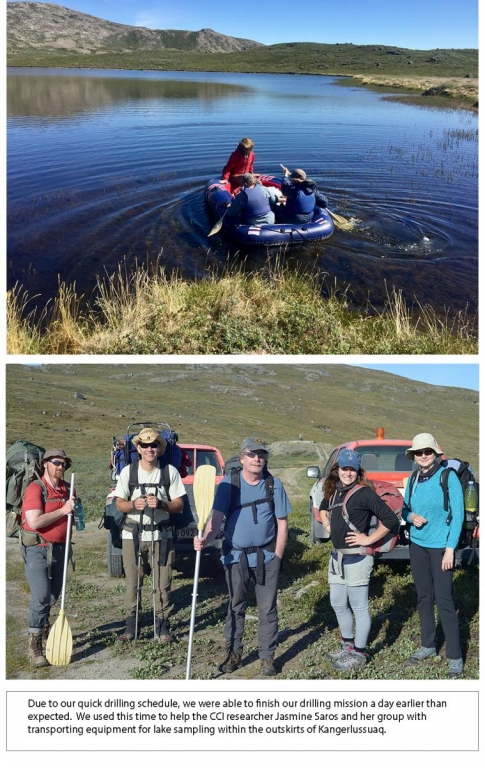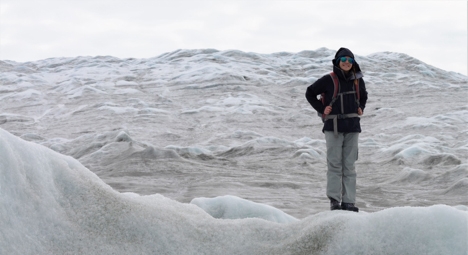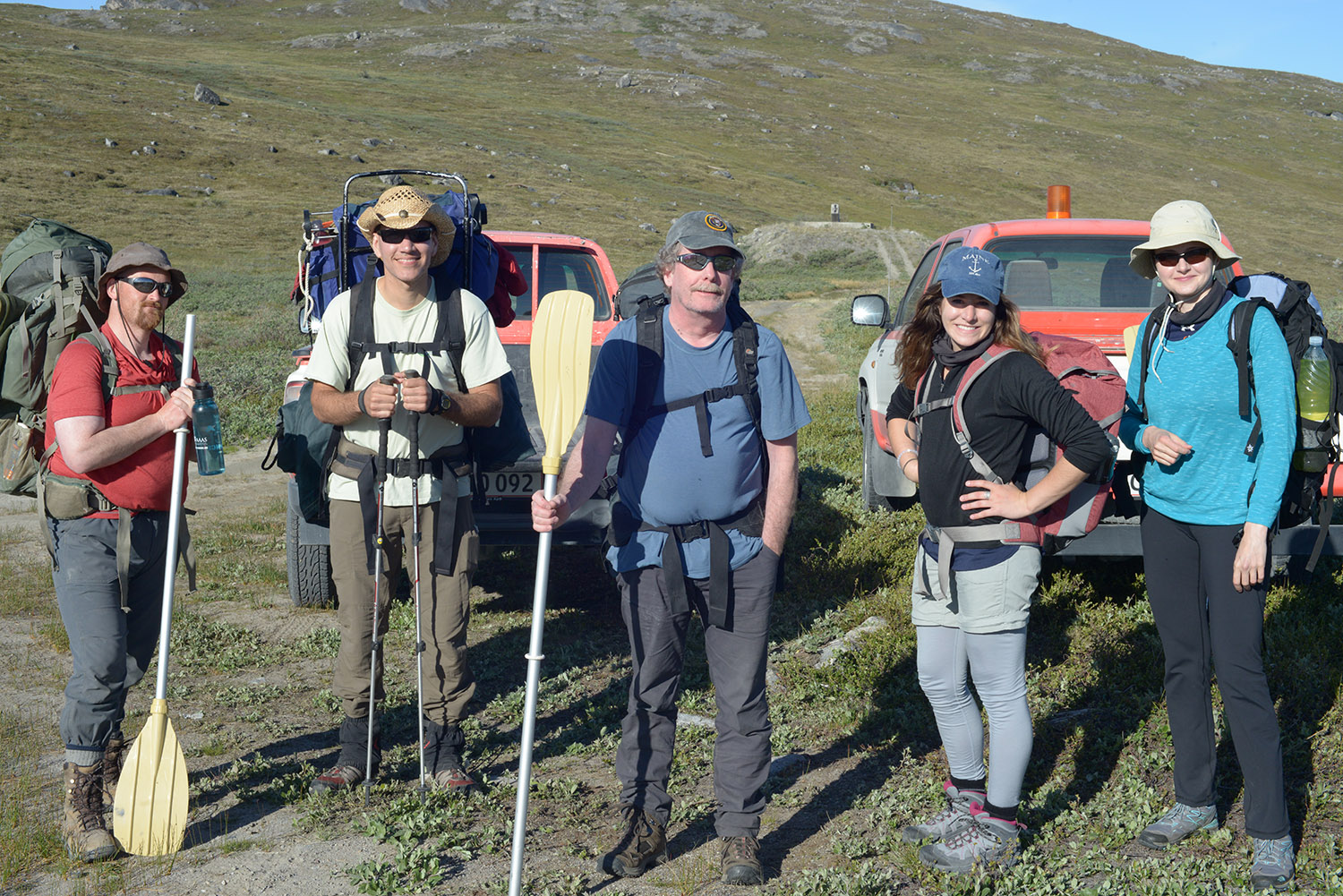
Southwest Greenland Ice Core Expedition: Recovery of Interglacial Ice Record
Southwest Greenland Ice Core Expedition: Recovery of Interglacial Ice Record
Kangerlussuaq, Greenland
Field Team Members: Andrei Kurbatov, Elena Korotkikh, Mike Handley, Heather Clifford
June 21- 29, 2017
During late June 2017, members of the Climate Change Institute (CCI) traveled to the city of Kangerlussaq in Greenland to retrieve ice that resembles the last interglacial. The purpose of this expedition to Greenland was to better understand modern-day trends of theHolocene (current geological epoch, expands over last 11.7ka) by expanding our knowledge of the lastinterglacial (warm period) also known as the Eemian (115-130ka). The Greenland Ice sheet in the Kangerlussuaq area was previously explored by several members of the Climate Change Institute where they made the discovery of a nanodiamond-rich layer in the Greenland ice sheet. Previous studies in this area gave researchers within CCI the confidence that easily accessible ice from the Eemian existed. The goal for this expedition was to locate and drill ice with characteristics of the Eemian interglacial and return the samples to CCI to analyze using ultra high-resolution methodology. We were successful in locating, drilling and recovering ice resembling the Eemian and transporting the samples to CCI.
Expedition Details
Our team of researchers flew on a C-130 aircraft from NY to Kangerlussuaq, Greenland on June 21 and stayed at the Kangerlussuaq International Science Support (KISS). The expedition took place over the period of four days which consisted of scouting the glacier, transporting equipment and drilling. After the ice was recovered, our research group spent a day with the Soros group to help transport equipment. We then packed up and left Greenland on June 29.
During this expedition, we noted the temperatures in Kangerlussuaq were above average for late June (around 10 ºC (50 ºF)). The high temperatures led to some complications during the drilling process, but we managed to overcome them to collect the ice. The changes in temperature were very clear even within the few days of our travels on the glacier. The first day on the ice, the temperatures were at a high of about 12.2 ºC (54 ºF), where we were able to walk with hiking boots and stepped over small streams that ran through the glacier. By the last day on the glacier, the temperatures were at a high of 22.2 ºC (72 ºF), where we found ourselves trudging through large streams with waterproof industrial boots. Using the reconstructed temperature anomalies for June 26, 2017, it is visible the temperatures in Kangerlussuaq are above average.
We traveled to the ice sheet via truck, about 2 hours outside of Kangerlussuaq. Once at the ice sheet, we hiked over glacial deposits and debris to the glacier then trekked about an hour across the ice to get to the drill site we had scouted out. After we were able to transport the equipment to the site, we used a Kovacs 3-inch core diameter drill to acquire ~3 m of ice. The samples collected were then labeled, packaged and stored to keep cold until transported back to a freezer in Kangerlussuaq. The ice was then transported back to the U.S. on a C-130 aircraft, where CCI members, Jeff Auger and Fran Schwanck picked up the ice and safely transported the samples back to CCI.
Acknowledgements: We express our gratitude to Jasmine Saros, Robert Northington and the rest of the Saros group for the opportunity to join them in Kangerlussuaq! We would also like to acknowledge NSF, U.S. Airforce, and KISS for all their help including lodging and transportation of equipment and ice. Thank you to CCI members Jeff Auger and Fran Schwanck for transporting the ice from NY to CCI.
Written by Heather Clifford (I would also like to acknowledge Paul Mayewski, Andrei Kurbartov, Elena Korotkikh, and Mike Handley for all their help and expertise during my first expedition!)



